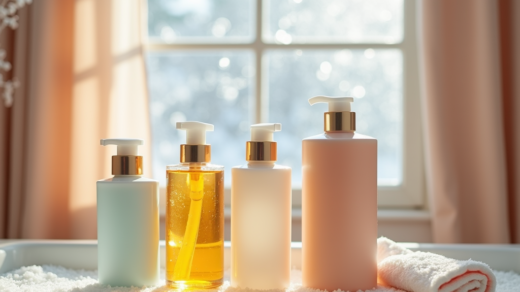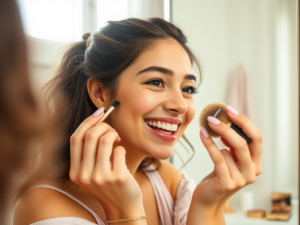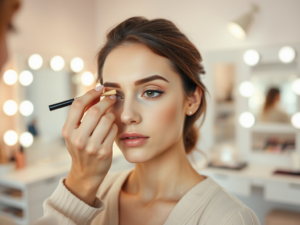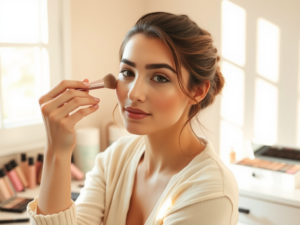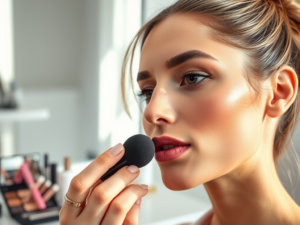Here’s What Dermatologists Have to Say About the Skincare Slugging Trend
Slugging has emerged as a noteworthy skincare trend, particularly for those seeking hydration and barrier protection. By applying a thick layer of an occlusive agent, generally petroleum jelly or similar products, enthusiasts claim to lock in moisture and enhance skin elasticity. However, dermatologists have varying opinions on this practice, emphasizing the potential benefits and drawbacks. This article will explore what experts are saying about slugging, the skin types that may benefit from it, and the important considerations one should keep in mind.
The Science Behind Slugging
Slugging aims to provide an additional layer of moisture retention, primarily by using an occlusive agent to seal in previous skincare products. The scientific rationale behind this practice is straightforward: when you apply a thick layer of an occlusive agent, it creates a barrier that reduces transepidermal water loss (TEWL). Dermatologists point out that this can be particularly beneficial for individuals with dry or compromised skin barriers. Here are some important points to consider:
- Moisturizing Benefits: Using petroleum jelly or similar products can help retain moisture for extended periods, benefiting those with dry skin.
- Barrier Repair: For individuals with eczema or other skin conditions, slugging could provide much-needed relief and aid in skin barrier recovery.
- Acne Considerations: While it can be beneficial, those with oily or acne-prone skin should be cautious as it may exacerbate breakouts.
- Skin Type Suitability: Slugging is primarily recommended for dry and normal skin types; consult a dermatologist if you have concerns.
- Application Timing: Ideally, slugging should be done at night after other products to maximize efficacy without clogging pores during the day.
Who Should Try Slugging?
Determining whether slugging is right for you can depend on various factors, including your skin type, concerns, and overall skincare routine. Dermatologists recommend slugging as an effective strategy for individuals with dry or dehydrated skin. It can also be advantageous during harsh weather conditions that may exacerbate dryness. However, those with oily or combination skin must tread carefully. The following groups may particularly benefit:
- Individuals suffering from eczema or psoriasis.
- People experiencing significant barrier impairment due to environmental stressors.
- Those with seasonal dryness or winter-related skin issues.
- Anyone seeking to maintain hydration during sleep.
- Individuals following a nighttime routine rich in serums or actives that require sealing.
Potential Risks and Misconceptions

Despite the potential benefits, slugging is not without its risks and concerns, which dermatologists emphasize should be seriously considered. One common misconception is that slugging is universally beneficial. While it works wonders for some, it can worsen conditions for others, especially those with more sensitive or acne-prone skin. Here are some potential risks:
- Pore Clogging: For those with oily skin, slugging can lead to clogged pores, resulting in acne flare-ups.
- Over-Occlusion: Using too many occlusive products simultaneously can lead to irritation and breakouts.
- Allergic Reactions: Some individuals may have allergic reactions to certain ingredients found in occlusive agents.
- Dependency: Over-reliance on slugging may prevent users from pursuing a balanced skincare routine.
- Not a Cure-All: Slugging should not replace sustainable hydration practices like drinking water or using hydrating products.
Best Practices for Slugging

To maximize the benefits of slugging while minimizing potential adverse effects, consider implementing some best practices recommended by dermatologists. First and foremost, it’s crucial to ensure that your skin is clean and well-prepped before applying any occlusive layer. Using a hydrating serum or moisture-rich products as a base can enhance the effectiveness of slugging. Here are some guidelines to follow:
- Start Slow: If you are new to slugging, begin by incorporating it one or two nights a week to see how your skin reacts.
- Choose Wisely: Opt for high-quality, non-comedogenic occlusive agents to reduce the risk of clogged pores.
- Layer Strategically: Use hydrating and nourishing products before sealing, such as humectants containing hyaluronic acid or glycerin.
- Patch Test: Always perform a patch test with new products to rule out any allergic reactions.
- Consult a Professional: If unsure about your skin concerns or product suitability, seek advice from a dermatologist.
Conclusion
Slugging can be a valuable addition to many skincare routines, especially for those struggling with dry skin or barrier issues. However, it’s essential to consider individual skin types and concerns before diving in. With the insights provided by dermatologists, individuals can make informed decisions about whether to incorporate this trending technique into their skincare regimen. Remember, every skin responds differently, and what works for one person may not necessarily work for another. As with any skincare practice, the key is customization and listening to your skin’s needs.
FAQs
1. Can slugging worsen acne?
Yes, for those with oily or acne-prone skin, slugging can potentially clog pores and lead to breakouts. It’s advisable to consult a dermatologist before trying this technique.
2. How often should I slug my skin?
For those new to slugging, starting once or twice a week is recommended. Observe how your skin reacts and adjust accordingly.
3. What products are best for slugging?
Opt for lightweight, non-comedogenic occlusive agents like medical-grade petroleum jelly, aquaphor, or specific occlusive gels designed for the face.
4. Can I use slugging on sensitive skin?
Individuals with sensitive skin should approach slugging with caution, starting off slowly and possibly consulting a dermatologist for personalized advice.
5. Is slugging effective in all seasons?
Slugging is particularly beneficial in dry winter months but can also help maintain moisture during other seasons, depending on individual skin needs.

